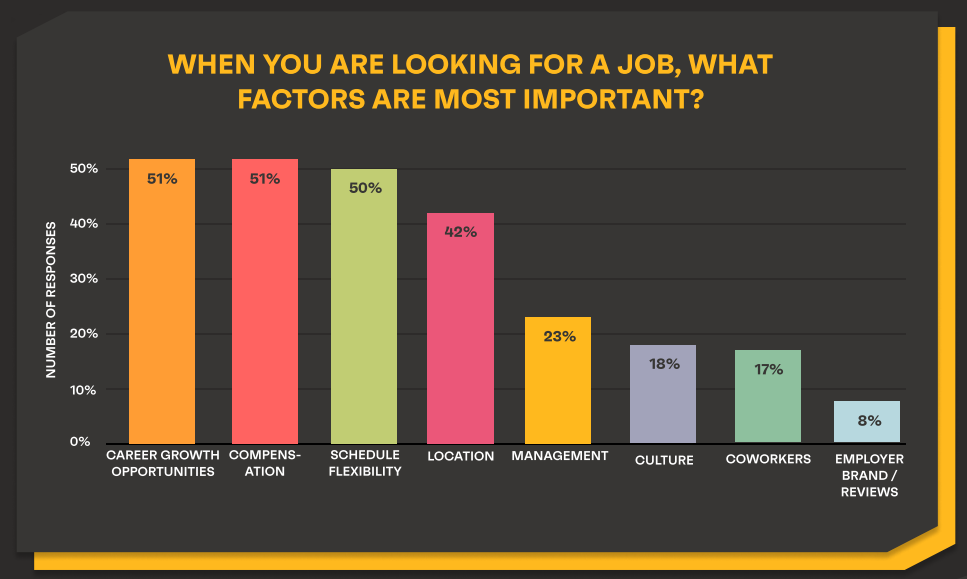Career Structure and Mobility Of The Canadian Worker: A FindWRK Report (Part Two)
As an employer the flexibility of your team and your ability to hire and schedule is directly impacted by talent who work multiple jobs. According to a FindWRK report, more than one third of Canadian workers work more than one job, particularly Career Hourlies and Career Discoverers.
The findings in part two of “A Picture of the Hourly Workforce” will help you better understand how candidates structure their career – the number of jobs they have, how often they move, what drives them to leave a job or select their next one – which will help you design your roles to increase hiring yield and limit turnover.
According to FindWRK, employers need to get specific about the nature of the role you’re looking to fill, when you need availability, and what degree of flexibility you can offer those that work multiple jobs. All the while being aware of how many of your team work multiple jobs. It’s this flexibility in staffing and scheduling that can be a major differentiator in the hiring market.
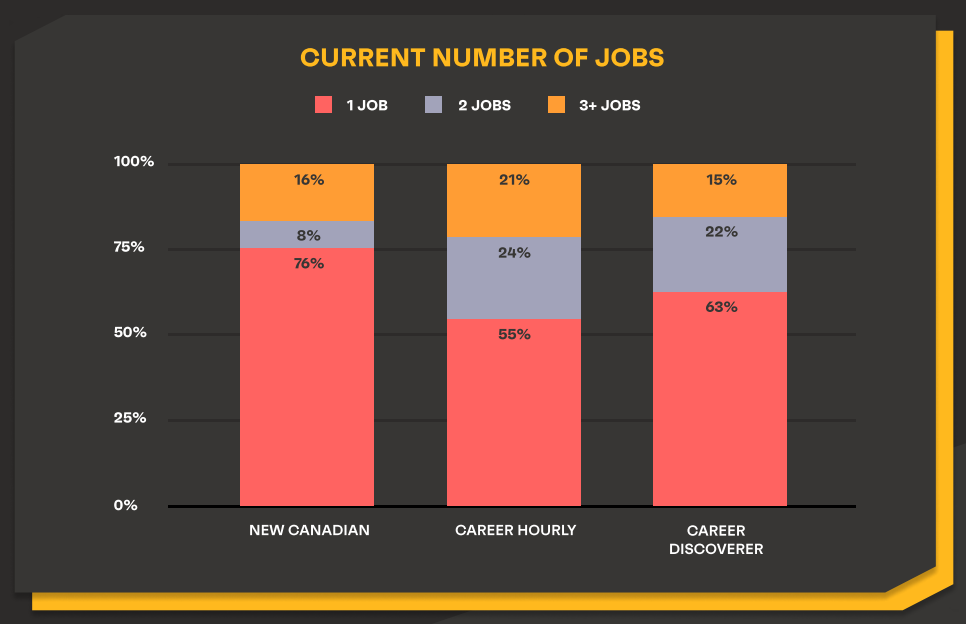
Why Are So Many Canadians Holding Multiple Jobs?
According to the report, additional income is the primary reason that individuals work multiple jobs. There is some nuance by segment: New Canadians are more likely to value growth opportunities and Career Discoverers are disproportionately motivated by flexibility. But the clear driver for most is income.
One Career Discoverer found that the proverbial glass ceiling stunted their ability to find higher pay, saying “I don’t want to hold more than one job, you know? But it feels like to have any security, that’s just the way it is these days. I took on a second role because I needed the income and there wasn’t enough room to grow in my primary role”
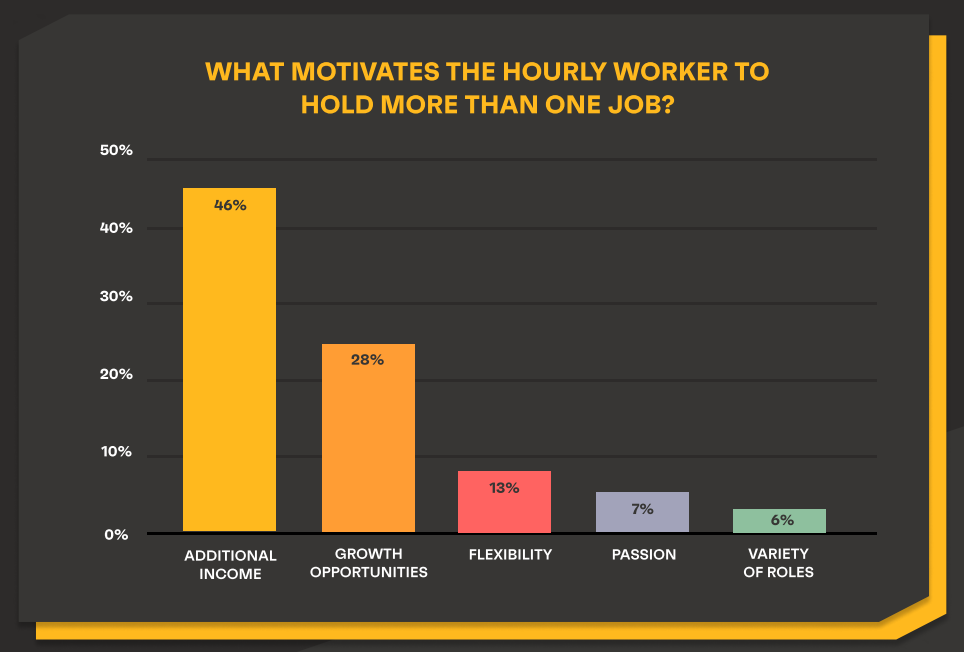
Another catalyst for this need to cater to the flexibility of the hourly workers, is the hope that. by doing so, companies can retain good talent. According to the report, hourly workers move roles frequently. Average job tenure among our survey population was approximately 12 months. FindWRK found that, (not surprisingly) those under the age of 35 were almost twice as likely to stay for a shorter period of time. The data derived from the report suggests that there is a degree of optimism that tenures will be longer. 40% of people spent less than 6 months in their last role, but only 20% expect to spend less than 6 months in their current role.


Workers Staying Put (Within Industry)
Hourly workers for the most part are staying put within their respective industries, at least in the short-term. FindWRK sought to find the magnitude of the movement across the various industries. They found that only two-third expected to be in the same role in 1 year. Only half expect to be in the same role in 5 years. Looking beyond the role, over 25% say it’s unlikely they will be in the same industry in 1 year, while 40% expect to be in a new industry 5 years from now.

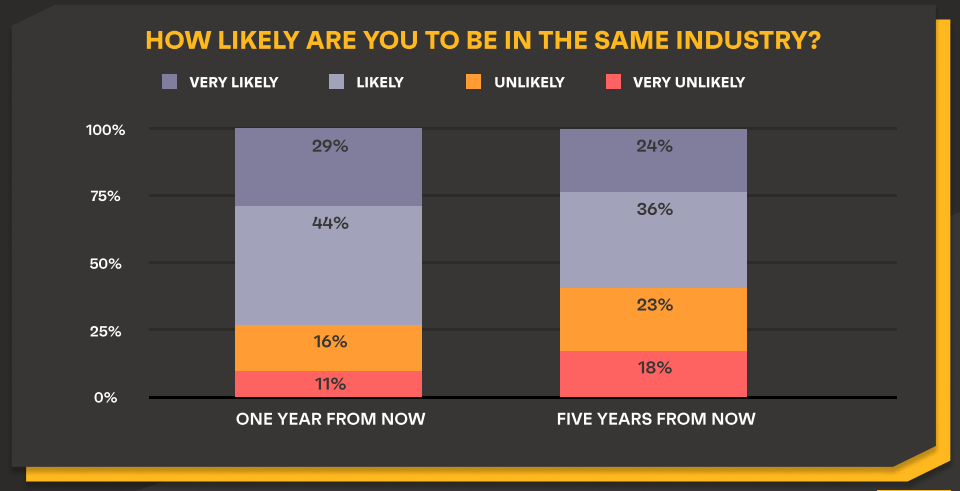
The Big Question: Why Are Workers Leaving
Workers across all segments of the workforce choose to leave jobs for similar reasons., but the main drivers vary from segment to segment does vary. The most common reason across all segments is management. Secondly, Compensation, which the report states plays a more important factor for those early in their careers in addition to Career growth. For New Canadians, location was a major driver in why talent left their jobs, as they shift to adapt to a new home and country.
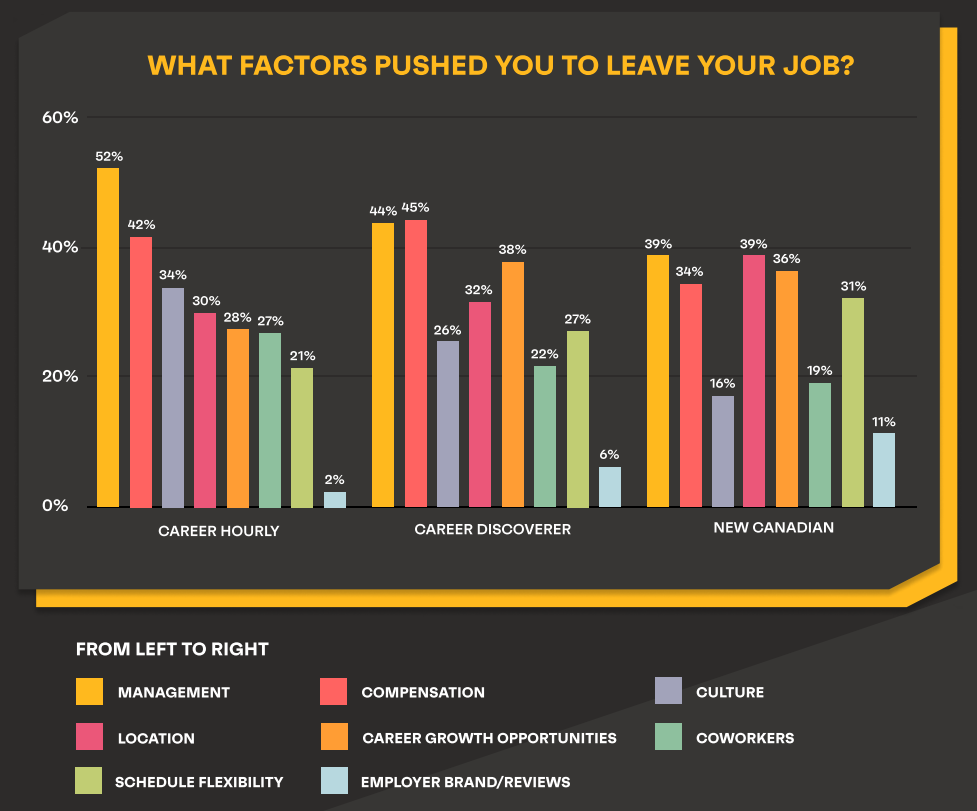
So that leave us with the next natural question to ask – What draws workers in? Not only find great talent, but hold onto them? When workers begin looking for a job, the four factors that are most important to them are career growth, compensation, schedule flexibility, and location.
According to FindWRK, Career Hourly and the Career Discoverer value compensation the most, while the New Canadian values career growth opportunities above all else. Check out the full spectrum of reasons and how they stack up.
Understanding movement, how often workers move roles and why they move allows you to better position your offering as an employer. In the next edition of this three-part series, we will reveal what the team at FindWrk have found on Recruiting and Hiring. Stay tuned and understand what the job search actually feels like, then identify ways to differentiate yourself
FindWRK is a human-led platform that reimagines a more efficient way to recruit hourly workers.
To read the hourly worker report click here
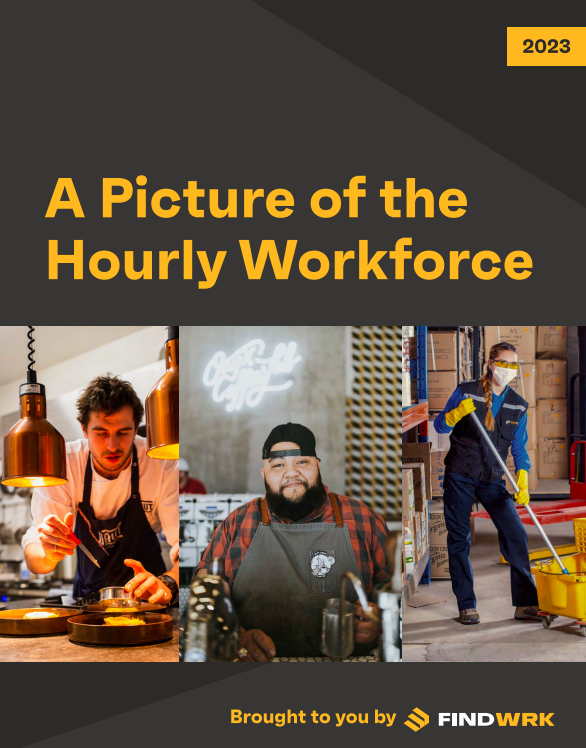
FindWRK has conducted in-depth workplace analysis of the Canadian workplace in its 2023 Edition of a Picture of the Hourly Workforce. In part one of this series, we take a look into the size of the hourly workforce, demographics, segments and their respective career priorities.
“FindWRK was designed to provide efficiency without sacrificing human connection. In minutes you can build a shortlist of select candidates that meet your needs and canvas them for interest. Then connect directly with those that fit and have intent. The first connection made with the candidate is a human one. And you start your relationship off on the right foot.” says Michael Wallace, CEO FindWRK
The folks at FindWRK spend every day talking with workers, and understand how challenging the job search is, digging deeper into the worker experience with one mission – to find out why? Their research stems from the intersection of technology and the recruiting process. They found that, if done right, recruiting balances the digital and the human. But increasingly that human connection was being lost. This analysis explores the biggest trends in hourly work and offer solutions to these complex problems.

